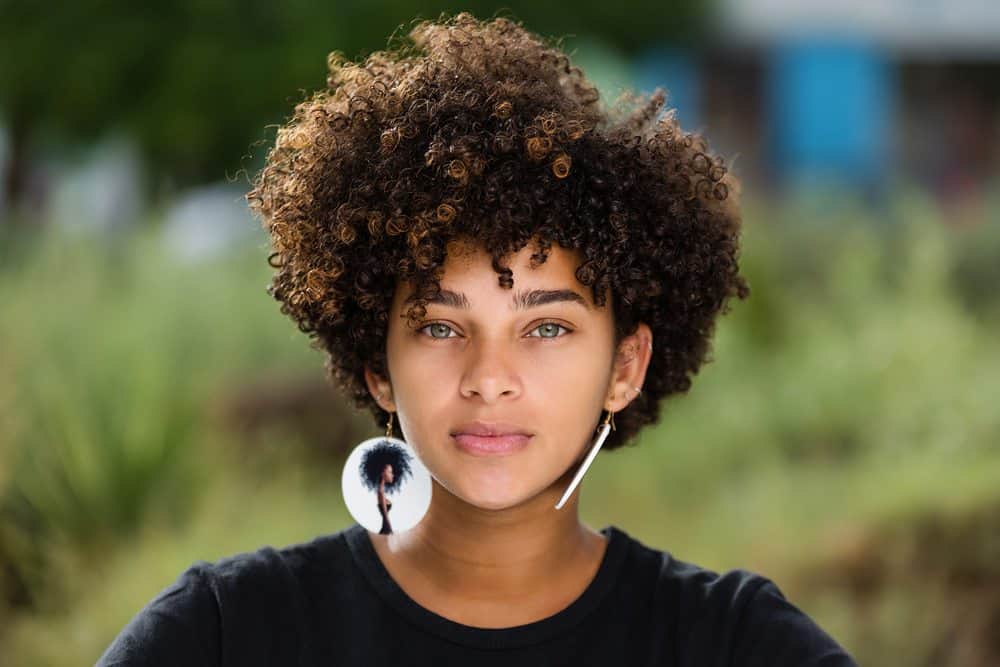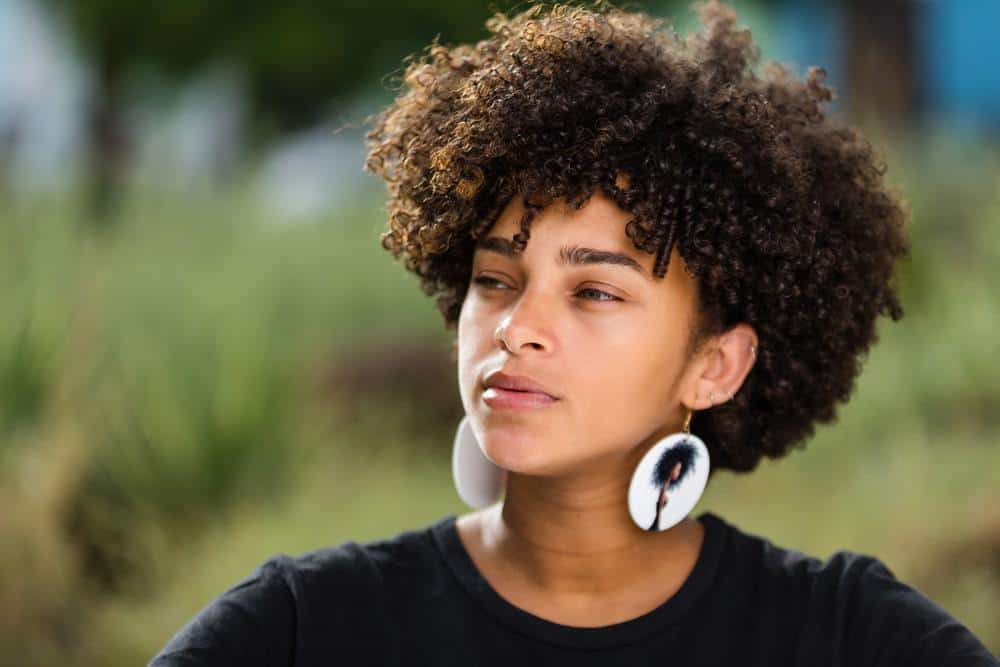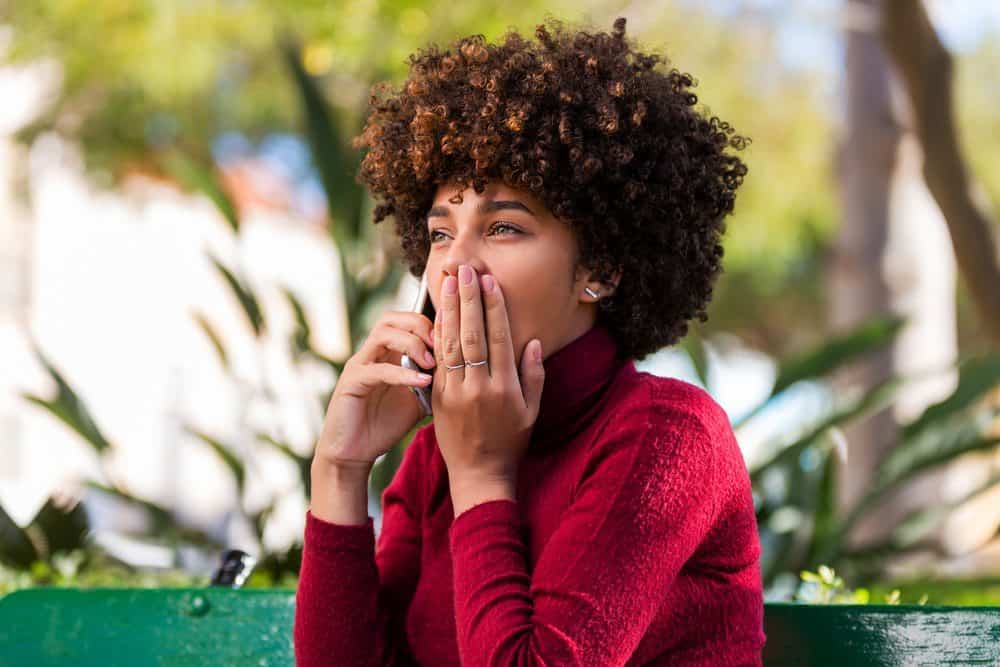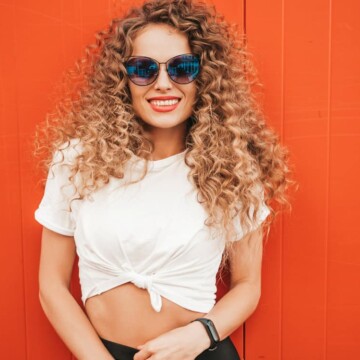
Low porosity hair needs special treatment! Since water has a tough time penetrating the cuticle, you have to take extra steps.
Moisturizing low porosity hair requires lots of hydration, and every drop counts. Plus, there is a long list of damaging ingredients to avoid.
In this article, we discuss the following:
- Low porosity hair
- Best moisturizers for low porosity hair
- How to absorb hair oils
- The ingredients in a good leave-in oil
- How to properly apply leave-in oils
- The best leave-in oils and what they treat
- Ingredients to avoid
Each product is carefully selected based on its effectiveness, and we want you to make the best choices for your hair's health.
Keep reading to dive into every aspect of properly moisturizing low porosity hair.
Table of Contents
- 1 What Is Low Porosity Hair?
- 2 What Are the Components of Hair, and How Do They Effect Moisture?
- 3 How to Make It Easier to Absorb Moisture Into the Hair Follicle
- 4 The Best Moisturizers for Low Porosity Hair
- 5 What Makes a Good Moisturizer for Low Porosity Hair?
- 6 Ingredients to Look for in a Good Hair Moisturizer
- 7 Ingredients to Avoid in Hair Oils
- 8 Avoid the Nasty Ingredients; Try These Instead!
What Is Low Porosity Hair?

Low porosity hair is an uphill battle for most people. Typically, it is defined by its inability to absorb a lot of moisture. Thicker moisturizers usually sit on the top of the hair follicle. They need an extra push to absorb properly.
Another aspect of low porosity hair becomes obvious with water. When trying to soak the hair in the shower, it seems like water bounces right off of it. Any hair type can be low porosity, but coily hair is the most common.
What Are the Components of Hair, and How Do They Effect Moisture?

Imagine a single strand of hair. What makes that strand, and what does each part of it do? Hair is defined by three parts: the cuticle, the cortex, and the medulla.
The cuticle is the very outside of your hair. For moisture to penetrate it, it needs to be open for the hydration to get inside.
The dead cells in the cuticle layer over each other to create a scaly surface. It guards the inner parts of the hair against bacteria and toxins.
The cortex is responsible for the hair’s coily nature. It lets the follicles stretch and bounce back to their original shape.
It also stores melanin, which gives your hair its pigment. A damaged cortex gives you brittle, dried-up hair; or split ends.
The medulla is not always a part of the hair follicle. Sometimes it appears, and sometimes it doesn’t, depending on the person. Fine hair is usually missing a medulla, and coarse hair usually has it.
How to Make It Easier to Absorb Moisture Into the Hair Follicle

Every part of your hair (except for the medulla) plays a role in moisture intake. Tighter cuticles have a harder time opening up to let you hydrate.
This is not necessarily a bad thing! Look at it like this: your hair has a strong, protective barrier.
It is very good at keeping bacteria, toxins, and chemicals out. You get to choose exactly what you put into your hair with a few extra steps.
Deep conditioning is a special type of treatment for low porosity hair. Finding the right deep conditioner is the best way to restore moisture.
These types of products are often left in for 10 to 20 minutes. Afterward, you rinse them out with lukewarm water.
They are a great way to get soft and shiny hair almost instantly. Deep conditioning consistently puts you on the fast track to healthy, happy hair.
The Best Moisturizers for Low Porosity Hair
Public Goods Conditioner
Description: Public Goods created this conditioner to protect and repair dry hair. The majority of their buyers love hydrating and chemical-free ingredients. This is not a leave-in conditioner, so wash it out during your shower!
Pros:
- Cruelty-free
- Paraben, phthalate, fragrance, sulfate, and formaldehyde-free
- Vegan friendly
- No proteins*
- All-natural
- Wallet-friendly
Cons:
- Contains Propylene Glycol** and Silicone
- No added fragrance, meaning the product has a particular scent.
*Balancing moisture and proteins are critical for tight cuticles (4C and 4D hair). If the hair absorbs too much protein, it can become brittle and break off easily.
** Propylene glycol breaks down proteins, so use sparingly.
After that, retain moisture by adding humectant and emollient moisturizers. They help your hair hydrate itself by attracting moisture.
Avoid occlusive moisturizers unless you want to trap your hydrating products against the hair. Anything thick should be applied last to avoid buildup.
Extreme Dry Hair Conditioner by Just Nutritive
Description: Just Nutritive understands the importance of penetrative hydration. Their Extreme Dry Hair Conditioner uses plant-based ingredients to treat low porosity hair. Use it to rehydrate, combating frizz and breakage.
Pros:
- All-natural
- Uses plant oils
- Sulfate and chloride free
- Tames frizzy, dry hair
Cons:
- Pricey
- Contains coconut oil*
*Coconut oil may be too thick to penetrate a tight cuticle. Add a thinner oil before using the conditioner.
Avocado + Kiwi Mega Moisture Superfood Hair Mask
Description: Use the Mega Moisture Mask to deeply treat dehydrated hair. The best way to fight against dryness is to add long-term moisture. This product does require a rinse after applying it, and it replaces your regular conditioner!
Pros:
- Protein-free and plant-based
- Made for dry, curly, and coily hair types
- Specifically uses emollient ingredients
- Works for treated hair
Cons:
- Pricey
- Small packaging
People use hot oil treatments to get the ingredients deeper into the hair. Put a few drops of your hot oil into a heat-safe container.
Place the container into shallow, boiling water, and leave it for a minute or two. It is ready when it is comfortably warm. Apply it to your damp scalp, and massage it in.
A basic rule of thumb is that shampoo opens your cuticle, and the conditioner closes it. Unless you are color treating your hair, there is no reason to raise your cuticle completely. Even if you could, your cuticle would quickly close again.
Warm water and moisture in the air are plenty for adding moisturizers. Find low porosity hair products made to seep into the cuticle. Instead of trying to raise it yourself, go for thin, moisture-attracting ingredients.
What Makes a Good Moisturizer for Low Porosity Hair?

The “best moisturizer” is subjective. It depends on the user’s personal preferences and their hair type. When it comes to low porosity hair, moisture needs to be easy to absorb.
Add thin ingredients before thick ingredients. Try to avoid thicker ingredients like coconut oil before moisturizing.
However, coconut oil does seal in moisture. It works as a good pre-wash ingredient because it guards the hair against damage. Keep in mind that there is a chance for buildup over time!
Ingredients to Look for in a Good Hair Moisturizer

Because of science and new discoveries, there are endless options for hair care. Every day, beauty professionals look into the latest and greatest ingredients.
These ingredients are novel in every way possible.
From generational techniques to brand new findings, there is an ingredient for every hair type. Depending on the type of treatment, the following ingredients should help you find a good place to start:
- Rosemary oil: Spurs new growth, not for sensitive scalps.
- Sweet almond oil: One of the best thin moisturizers for every hair type.
- Lavender oil: Treats dandruff, reduces stress and smells amazing.
- Jojoba oil: Great for moisturizing and growth.
- Sage oil: Works great for hair growth, circulation, and adding nutrients.
Honey and Sage Deep Conditioning Treatment
Description: With sage as the main ingredient, you get all of the benefits with every use. This product won its award because it attracts moisture to the hair cuticle. Use it at least once a week to deep condition and renew hydration.
Pros:
- Draws and locks in moisture
- Has all-natural ingredients
- Plant oils nourish hair and scalp
- Award-winning
- Great reviews
Cons:
- Contains protein
- Lengthy shipment time
- Olive oil - for shine and softness; prevents split ends
Organic Pomade
Description: The Organic Pomade is not a leave-in conditioner. It works as a styling tool. Unlike other similar products, it also gives hydration. The thinner ingredients give you less buildup over time, and the olive oil sinks into the scalp to moisturize.
Pros:
- 100% all-natural and organic
- Thin moisturizer, easily absorbed
- Does not weigh hair down
- Less buildup and residue
- Good for styling and moisturizing
Cons:
- Contains essential oils*
*Essential oils may irritate the scalp, but it depends on the person’s skin sensitivity!
Here are some more moisturizing ingredients if you want to repair and restore damaged hair, treat hair loss, fight-off dandruff and other aliments:
Repair and Restore Damaged Hair
- Aloe vera
- Argan oil
- Sandalwood oil
Treat Hair Loss
- Tulsi
- Hibiscus flower
- Vitamin E
- Almond
Fights Dandruff and Other Ailments
- Shikaki
- Tea tree oil
- Eucalyptus
- Apricot oil
Ingredients to Avoid in Hair Oils

For every great ingredient, there is a not-so-great additive. The beauty industry takes a lot of trial and error!
What worked for us in the past might not fare so well now. It is important to stay up-to-date with the latest harmful ingredients.
Be sure to avoid these next few ingredients to stay healthy and happy:
Isopropyl Alcohol
Low porosity hair is hard to rehydrate. An ingredient like isopropyl alcohol is highly stripping and not great for low porosity hair. Eventually, losing too much hydration ends in breakage and damage.
Petrolatum
Petrolatum forms a thick film over the hair. It is hard to get off with anything other than a sulfate, which leads to more damage. It does not add moisture, and it keeps oxygen out of the hair. It seals in any chemicals and toxins, resulting in breakage.
Polyethylene Glycol
Much like alcohol, polyethylene glycol strips the hair of its hydration. Once you lose moisture, it is tough to get back. PEG is most commonly known as plastic, so think about the damage it does as it coats the hair.
Propylene Glycol
While adding too many proteins can be harmful, stripping them away is worse. Propylene Glycol breaks down the natural bonds in the hair.
The long-term harm is nearly irreversible, and it is best to avoid this ingredient. It is also so thin that it dissolves, taking other hydrating ingredients with it.
Imidazolidinyl Urea
This highly damaging ingredient made a name for itself recently. Experts link it to severe hair loss because it makes formaldehyde. Using it for a long time breaks down the hair follicles, causing irritation and thinning.
Avoid the Nasty Ingredients; Try These Instead!

100% Pure Jojoba Oil
Description: This pure plant oil is a surefire way to get the full benefits. Jojoba oil is highly moisturizing and helps speed up hair growth. It stops breakage by making your hair stronger.
Pros:
- No preservatives or synthetic chemicals
- Environmentally-friendly packaging
- USDA Organic certified
- Treats dryness, dandruff, and thinning
- Use for skin, hair, and nails
Cons:
- Limited ingredients
- Separate dropper
Hair Dew Low Porosity Leave-In
Description: Yet another unique product makes its way into the beauty industry. This product works in place of tap water. Use it instead of wetting your hair in the shower. It is a special type of water with hydrating ingredients that you can use to wash, dampen, and moisturize low porosity hair.
Pros:
- Cruelty-free and vegan
- High pH raises the cuticle for moisture
- Good for detangling
Cons:
- Needs to be carefully stored
- Price
Aunt Jackie’s Balance Growth Oil
Description: Aunt Jackie's Balance Growth Oil is an affordable way to hydrate your hair. Because grapeseed oil and avocado oil are so thin, they filter into the cuticle easily. Use it as a hot oil treatment or before shampooing your hair.
Pros:
- Works as a pre-wash
- Thin ingredients absorb easily
- Paraben and sulfate-free
- Low cost
Cons:
- High cost for delivery
- Small packaging
In Conclusion

Moisturizing low porosity hair takes a bit of trial and error. There are thousands of great products on the market to start your hair care journey. With a bit of research, it is possible to achieve moisturized low porosity hair.
Because the hair cuticle does its job so well, you need to take some extra steps. Adding hydration is essential for your hair care routine.
While there are some great ingredients, the beauty industry has a long way to go. The average product is starting to take the all-natural route.
As more companies reduce their toxic ingredients, natural hair care will become safer for low porosity hair types.
When choosing a product, do your research. You may end up doing more damage with the wrong product!




